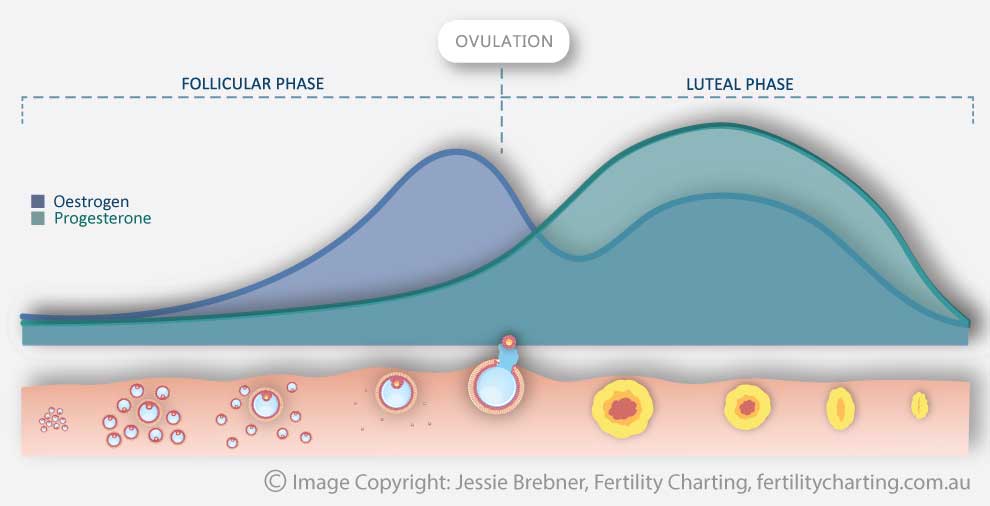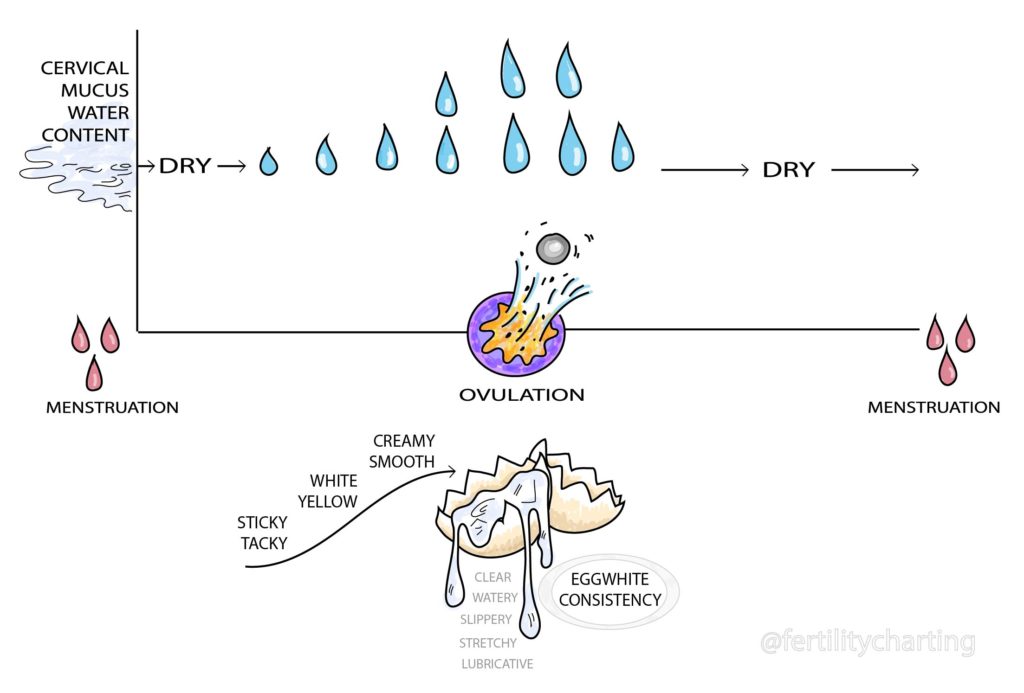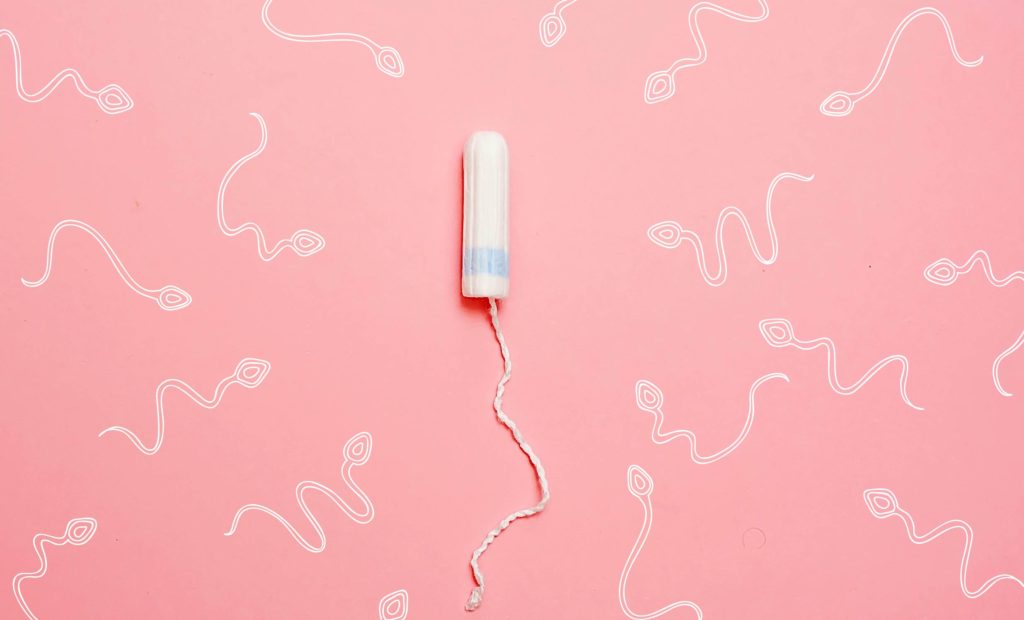Is Your Ovulation Boosting Your Man’s Testosterone Levels?
Is Your Ovulation Boosting Your Man’s Testosterone Levels?
I was speaking with a client from New Zealand last week, and we got on to the most fascinating topic (which then led me down a bit of a PubMed rabbit hole).
The question that came up was:
“do men initiate sex more frequently when we’re ovulating?”
As you may already know, tracking your period with an app doesn’t usually give you an accurate idea of when you are in your fertile window.
However, the people I work with learn how to accurately identify their true fertile window (in real time, not relying on app predictions!). It’s an incredibly valuable skill, and I teach more about this in the Natural Contraception course and coaching, and in the Chart to Conceive course and coaching.
The point is, when my clients accurately identify when they are most fertile, some of them seem to notice that their male partners consistently have a higher sex drive in the week leading up to ovulation 👀
And just to throw another anecdote into the mix, I’ve personally noticed this as a very obvious pattern with my long-term male partner, too.
What could this mean? Is there a biological/physiological explanation for this? Are we just imagining this, or is there some truth to this anecdotal observation?!
Keep reading to join the conversation (and please add your two cents in the comments below).
Setting the Scene: What Is Your Body Actually Doing When You’re Fertile?
Before we dive in, it’s important to set the scene. What’s actually happening in our bodies in the week leading up to ovulation?
If you’re new around here, ovulation is when your body releases an egg from your ovary. That egg can become fertilised by sperm and result in a pregnancy! Ovulation only occurs once every menstrual cycle, and it is a 24-hour hormonal event. During these 24 hours, our ovaries can release one (or more!) eggs. After these 24 hours, ovulation is no longer possible due to rising progesterone.
Now here’s where it gets interesting. In the week leading up to ovulation, a group of follicles in your ovaries is growing larger. Each follicle contains an egg. Eventually, one of these follicles will become dominant, and grow to around 2cm in size. As these follicles are growing larger, they give off higher and higher levels of oestrogen. Oestrogen is a hormone, and it travels around our body in our bloodstream. Oestrogen is highest in the week leading up to ovulation. During this time our testosterone levels are higher, too.

Oestrogen has lots of different effects in our bodies. Visually, we may notice our faces become more symmetrical, our skin blemishes smooth out, and our lips and cheeks become flushed, plump, and rosier. In short, we get an “ovulation glow” during our fertile window thanks to the action of oestrogen.
Oestrogen also triggers our cervix to start producing cervical mucus. Cervical mucus is a wonder-substance that helps to keep sperm alive in our reproductive tract, by protecting them from the acidic environment of our vagina. As we get closer and closer to ovulation, our cervical mucus becomes increasingly watery, slippery, clear, stretchy and profuse (a little bit like raw eggwhites!). This helps sperm to swim through the cervix easier. If you’ve never heard of cervical mucus, you might like to take the Symptothermal video course to learn more (it’s free). Alternatively, you can browse the gallery of real life cervical mucus photos, too.
Eventually, our oestrogen levels rise so high that they trigger a surge in luteinising hormone (LH) from our brain. LH triggers the egg to burst from our ovary. Ovulation is complete and oestrogen has already begun to drop lower.
What Might Cause Men to Initiate More Sex When We’re Fertile?
Science has already shown that many different male animals (such as rats, marmosets, goats, and macaques) experience a rise in testosterone levels when interacting with female animals who are fertile or in oestrus/heat. This is theorised to increase male aggression toward other males, and increase sexual drive at the most fertile times of the female’s oestrus cycle.
But what about humans?
A 2013 study collected scents from women’s armpits and vulvas using cotton pads worn for at least 8 hours. The researchers collected these smells both when women were ovulating, and when they were in the luteal phase. Over 100 men smelled the resulting scents (but they weren’t told what they were smelling). The researchers found that the ovulatory scents significantly boosted men’s testosterone and cortisol levels. In contrast, when men smelled the woman’s luteal scents, their testosterone levels dropped. Men perceived the ovulating woman’s vulvar and armpit smells as more pleasant and familiar, while their luteal vulvar odours were perceived as more intense and unpleasant. Finally, men who had smelled an ovulating woman’s vulva or armpit smells reported a significantly increased interest in sex 👀
“Men who had smelled an ovulating woman’s vulva or armpit smells reported a significantly increased interest in sex“
An earlier 2010 paper outlines two separate studies where 15 women wore T-shirts overnight in both the ovulatory and luteal phases of their menstrual cycles. Over 100 men smelled these T-shirts before having their testosterone levels tested. The researchers found that the men who had smelled the T-shirt of an ovulating woman subsequently displayed higher levels of testosterone than the men who had smelled the T-shirt of a nonovulating woman or a control scent. Interestingly, the researchers found that ovulatory scents didn’t necessarily cause an increase in testosterone, but instead seemed to prevent the drop in testosterone levels that was seen in men who smelled the nonovulating women’s T-shirts. Finally, the men in the study reported that the ovulatory scents were more pleasant than the luteal scents.
“The men in the study reported that the ovulatory scents were more pleasant than the luteal scents“
So does this mean we are giving off “pheromones” of some sort? According to science, human pheromones are yet to be isolated and proven. That said, “axillary steroids” have been identified as possible frontrunners and may have some pheromone-like actions. Axillary steroids are produced in the testicles, ovaries, apocrine glands and adrenal glands. Some studies suggest that aliphatic acids from the vagina might have some pheromone-like actions, too.
In many different species, higher testosterone levels are associated with a heightened interest in mating, and humans are no different. According to this 2022 paper there is a strong correlation between testosterone levels and libido in men. So, if men’s testosterone levels rise in response to female ovulatory scents, (as suggested by these two papers), then it’s possible that this would result in more male initiation of sexual activity during the week leading up to ovulation.
“If men’s testosterone levels rise in response to female ovulatory scents, then it’s possible that this would result in more male initiation of sexual activity during the week leading up to ovulation.”
On top of all this, research shows we appear visually more attractive in the lead-up to ovulation. As I mentioned earlier, some studies have shown that our faces change to a more attractive symmetrical shape, our skin blemishes smooth out, and our lips and cheeks become more flushed, plump, and rosier. These changes are very subtle, but noticeable once you start looking.
So if we not only look more pleasant, but also smell more pleasant when we’re fertile (and these pleasant smells appear to increase men’s testosterone levels) – is it any wonder that our male partners initiate sex more frequently?
This certainly makes sense from an evolutionary perspective. The whole point of our existence is to ensure the continuation of our genes, which means bearing offspring. Having more frequent sex during our fertile window would be beneficial from that sense, as it increases our chances of conception.
As Jeff says ‘Life finds a way’ 😆
Devil’s Advocate: What About the Real World?
To play devil’s advocate here (because we all know I love a nuanced conversation), the two studies above were carried out under controlled conditions in a laboratory. Do the results hold up for couples out in the real world?
It would appear that they do not.
A 2018 study followed 48 heterosexual couples for four months. Women tracked their menstrual cycles using luteinising hormone test strips, and men provided daily saliva samples. The researchers wanted to find out whether the men’s testosterone levels would sync with their partners menstrual cycle to show a rise during the week leading up to ovulation.
The researchers found that there was no consistent pattern of testosterone levels relative to ovulation in a female partner.
The researchers suggest that if male testosterone does respond to female ovulation, it is not a strong or consistent effect in real-life settings, particularly among committed partners.
Okay, but What About Sex Frequency?
We’ve been talking a lot about male testosterone, knowing that as testosterone levels rise, so too does libido. But what does the science say about actual sex frequency across the menstrual cycle?
A 2004 study followed 68 women for up to 3 menstrual cycles, tracking intercourse frequency. Researchers found that intercourse was 24% more frequent during the six most fertile days of the menstrual cycle, but sex frequency abruptly declined after ovulation had passed. Researchers summarise by saying “apparently [there] are biological factors that promote intercourse during a woman’s 6 fertile days”.
If male testosterone isn’t rising in sync with ovulation, then why do we see intercourse frequency peak during the fertile window? Does increased female libido fully account for this observation? Or is something else other than raised male testosterone promoting more frequent sex initiation from the male?
Does an increase in female libido fully account for the rise in sex frequency seen during the fertile window, or is male libido also somehow affected by ovulation?
I personally don’t think that a 24% increase in sexual activity during the most fertile time of the menstrual cycle can be accounted for by changes in female behaviour alone (female testosterone levels rise in the week leading up to ovulation, which likely correlates with a higher libido).
My personal belief (based on my own anecdotal experience) is that SOMETHING is causing a simultaneous rise in male libido, too. And whether it’s testosterone (or some other type of pheromone-induced endocrinological change), possibly remains to be seen.
“I personally don’t think that a 24% increase in sexual activity during the most fertile time of the menstrual cycle can be accounted for by changes in female behaviour alone.”
Implications for Symptothermal Method Users
So what might all of this information mean for Symptothermal Method users?
Well, you’re likely going to experience an increased desire for sex during the week leading up to ovulation. It’s just nature, baby!
It’s also possible (as we’ve just investigated) that your male partner may want to initiate sex more frequently when you’re fertile, too.
The evolutionary drive to reproduce is powerful stuff!
If you’re wanting to prevent pregnancy, you’ll need to abstain from sex when you’re in your fertile window. I teach more about how to safely and accurately identify when you’re fertile in the Natural Contraception course and coaching.
If you prefer not to abstain, you’ll need to use other forms of protection, such as condoms. If you choose to use condoms in your fertile window, keep in mind that you’re now relying on the lower effectiveness of condoms, not the 99.6% effectiveness of the Symptothermal Method.
You might also find that you desire sex less once you’re outside of your fertile window. Amazing, toe-curling orgasms can still be had – but you might need to put a little more intention and thought into initiating sex with your male partner, or scheduling it into your week.
The waxing and waning of our libido across the menstrual cycle, and the way it is often at odds with our reproductive intentions, is one of the biggest ‘cons’ of using the Symptothermal Method for pregnancy prevention. It’s important you and your partner are aware of it, and ready with strategies to navigate this.
And as I always say; all contraceptives carry pros and cons – it’s up to you to weigh things up and decide what will work best for your life. For me personally, the Symptothermal Method wins hands down because I get to enjoy unprotected sex without nasty side effects from hormonal birth control (no thank you to blood clots, weight gain, hair loss, anxiety and depression if I can avoid it!).
What Have You Noticed?
Have you noticed anything similar? Does your male partner initiate sex more frequently when you’re in your fertile window? Please share your experiences and anecdotes below, because I’m all about that citizen science! Alternatively, if you’ve found the opposite I would love to hear from you, too!




